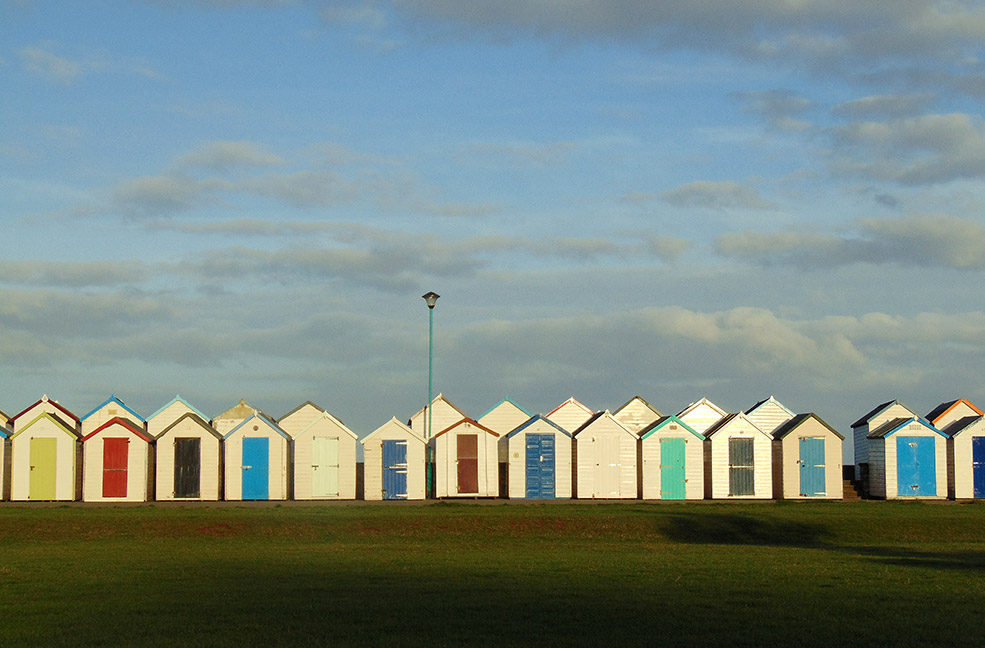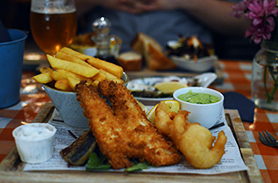Free food! There is something incredibly rewarding about eating food you have gathered yourself – I think it appeals to the hunter-gatherer instinct inside of us. But there are other benefits to foraging: it brings you closer to nature; it is healthy for body and mind; it introduces us to new places and new tastes. Plus, did I mention free food!?
Holidaying is a great time for foraging, we have a chance to slow down, have a look around, and try something new. Dandelion heads, Samphire, Elderberries, Sloes, Seaweed, Mushrooms, Blackberries and many other things can all be found in this generous county. In case you have no idea how to start, here is my guide to foraging in south Devon.
Foraging Lite at Totnes
I will start with a foraging experience which is so simple that I’ll just call it foraging-lite! But I’ve included it because it is a great way to introduce youngsters to the delights of foraging. At Steamer’s Quay in Totnes there are a series of raised beds which are always full of free food. Many of the old favourites are here including strawberries, chives and mint, but people are also encouraged to try nasturtiums, violets, and other more exotic treats. The beds clearly indicate which foods are ready to be picked and which need leaving for now.
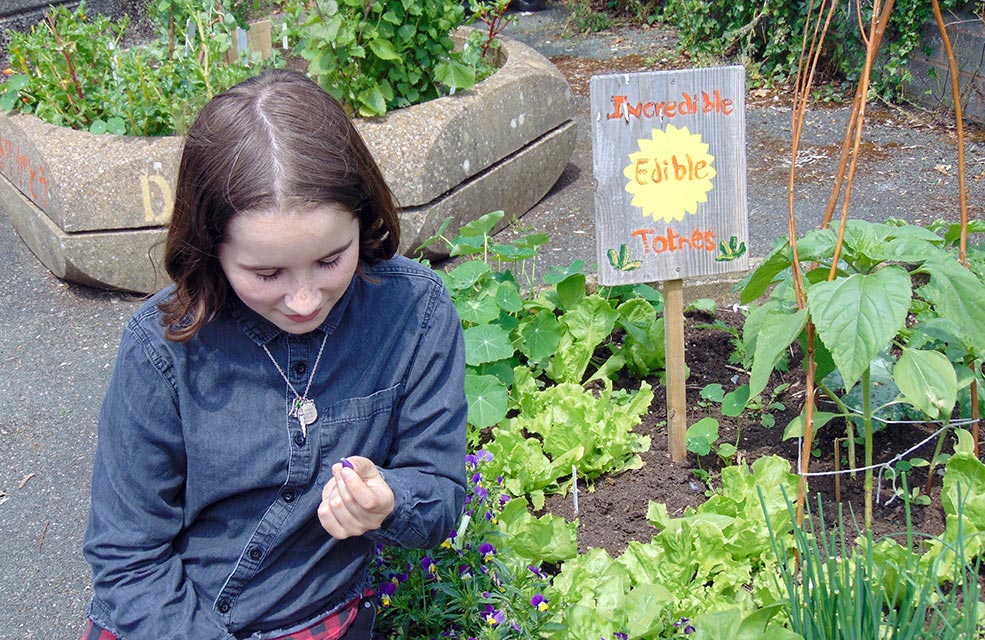
Samphire at Stoke Gabriel
There are two types of Samphire to forage; Rock Samphire and Marsh Samphire. Rock Samphire can be found in some rocky coves around Devon, but Marsh Samphire is a trickier find. It is worth it though if you can seek it out. There is a small creek at Stoke Gabriel which runs into the Dart. If you cross this at low tide, there are some marsh flats here which run beside the river where you can find lovely salty Marsh Samphire. Perfect with fish.
Dandelions at Berry Head
The heads of dandelions make a good spread. Just pick them when they’re yellow and mix with honey and butter. You can also make Dandelion tea from infusing the roots, leaves, or blossoms in hot water. The flowers make the best tea but there are huge health benefits from the root, which helps the liver, and leaves, which help the kidneys. There aren’t many places in south Devon where Dandelions don’t grow, but its probably best to avoid any too close to roads. Berry Head is always worth a visit, and there are lots of green spaces where dandelions grow in abundance.
Redcurrants and Raspberries at Longmarsh Meadows
Along the towpaths at Longmarsh Meadows, there are both raspberry canes and redcurrant bushes. These berries are some of my children’s absolute favourites, so we often enjoy a walk along here when the fruits are in season. Some people find redcurrants too tart to eat straight from the plant, but I love the odd flavour. If you prefer something sweeter, then redcurrants make a great jelly spread.
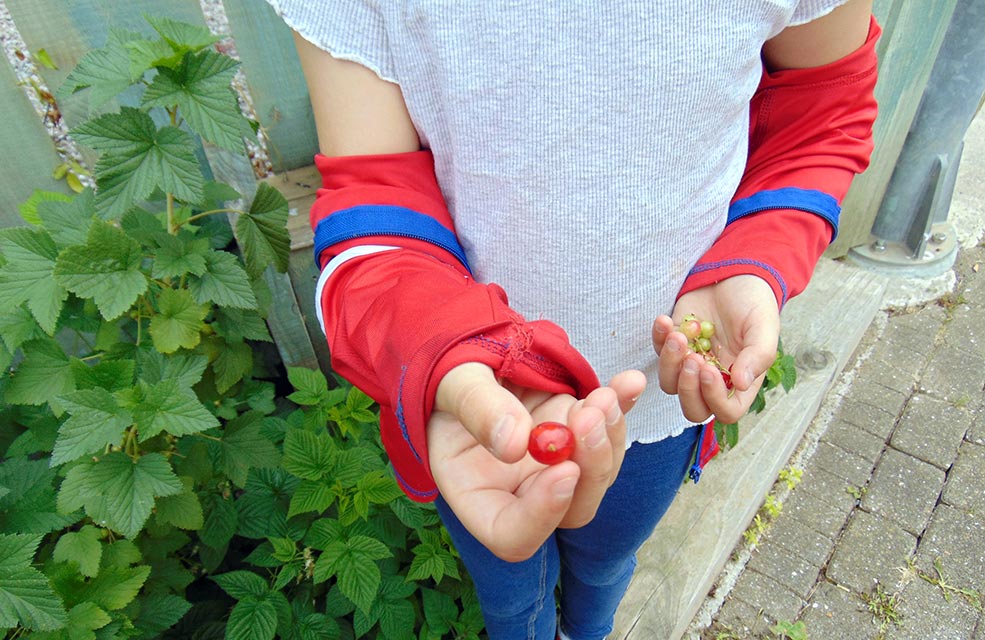
Blackberrying at Clennon Valley
I go blackberry picking with my children two or three times every year from late August through to September. My favourite spot is at Clennon Valley in Paignton, but there are hundreds of places where blackberries grow in abundance. It always amazes me that these free treats aren’t snapped up more readily. For nearly two months these treasures are just asking to be picked, and yet some people still manage to walk on by.
Mushrooms at Haldon Forest
Many people are understandably wary of picking wild mushrooms. Whereas most of the examples on this list can be picked completely safely, mushrooms are an exception. They are definitely something where a little caution and some expert knowledge is recommended. If you know what you are doing, then Haldon Forest is a good place to start.
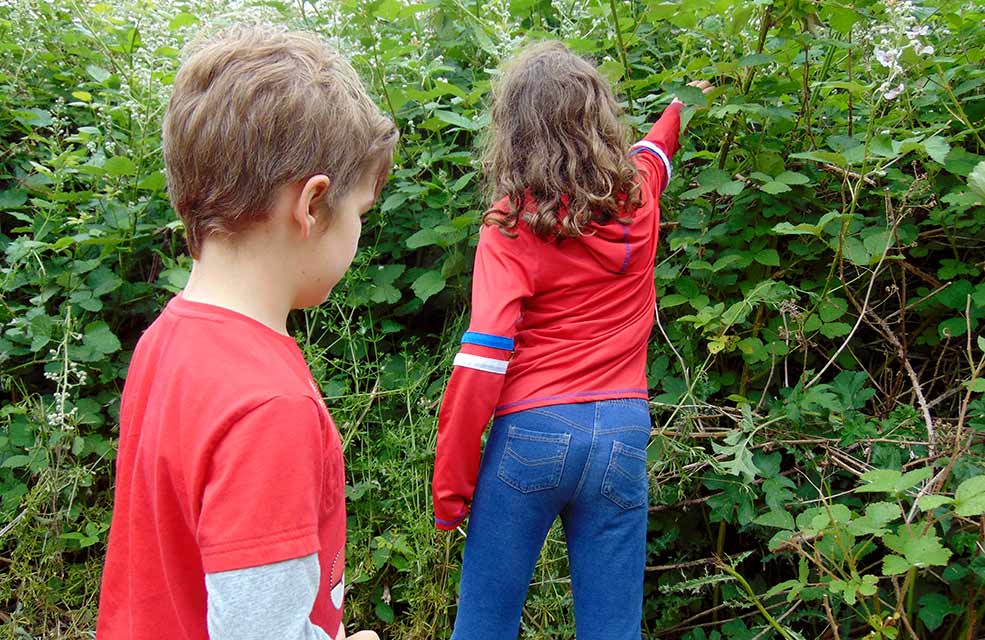
Wood Sorrel at Dewerstone Wood
Sorrell is a member of the Oxalis family and can be identified by the distinctive three leaves. These trefoil leaves grow in woodland areas, and can often be found growing amongst moss. The plants have five petalled white flowers, but it is the leaves which are tasty. They have a slight citrusy taste and add some sparkle to any salad. They are reasonably widespread in woodland, particularly where there are streams and moss. A good location to find them is beside the River Plym at Dewerstone Woods.
Foraging Courses at The Cleave Inn on Dartmoor
Finally, if you’d rather have an expert on hand to guide you in the ways of foraging, The Cleave Inn run regular courses. The Cleave Inn is at Lustleigh. For a small price they will give you a talk at the pub, then a 2-3 hour walk with an expert who will guide you in the ways of foraging on Dartmoor. The tour concludes back at the pub for a lunch including ingredients which were gathered that day.
If you're ready to try your hand at foraging, plan a holiday to south Devon now.


